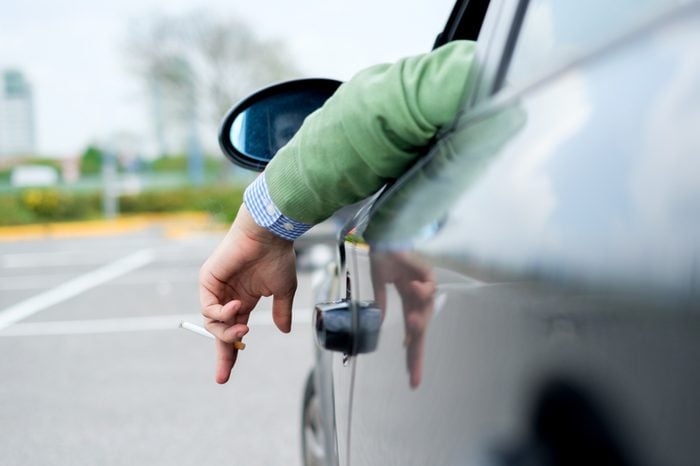
Smoking a cigarette
According to Brenda Thomas, a Georgia-based fire prevention chief, smoking poses the biggest risk of a fire while pumping gas. One loose piece of cigarette ash can ignite gasoline vapors in the air, setting anything nearby (including your car) on fire. “If a fire starts, do not remove the [gas pump’s] nozzle,” Thomas says. “Back away immediately and alert the store attendant” so they can shut off the fuel.
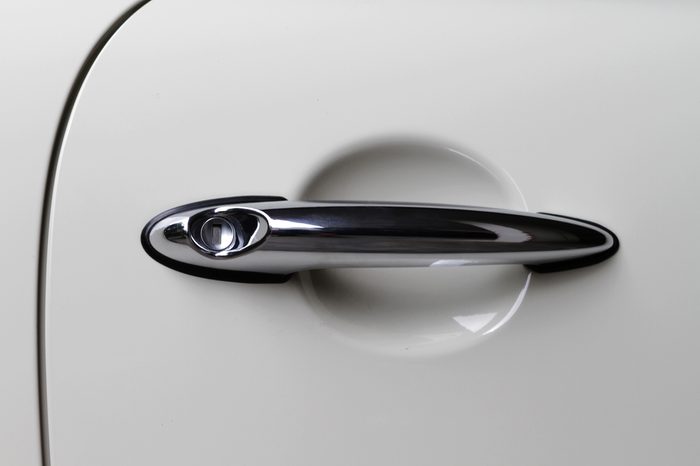
Re-entering your vehicle while it’s fueling up
You might want to think twice before seeking refuge from the cold, wind, or rain in your car while refueling. Getting in and out of your vehicle builds up electrical charges on your body, which you could then transfer to the dispenser’s nozzle when you grab it. That tiny spark can start a fire. To discharge any static, Virginia-based fire chief Gregory Wormser recommends touching something metal with your bare hand—such as the vehicle door—before reaching for the pump’s handle.
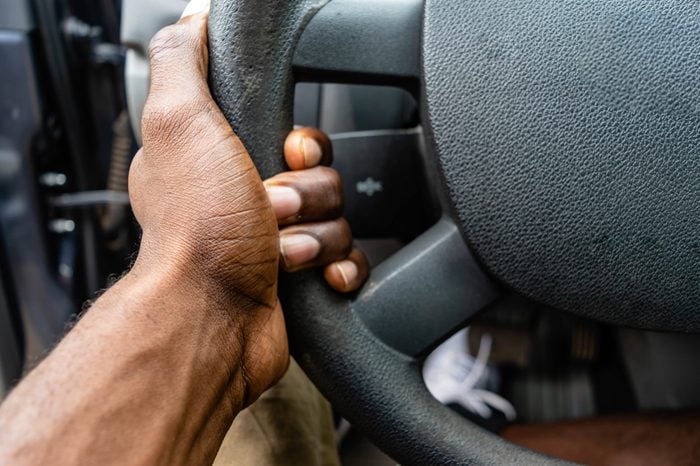
Driving away with the nozzle attached
Most people fill up when they are en route to somewhere else, which means they are often in a hurry and distracted. But not paying attention at the pump can lead to serious (and hazardous!) mistakes, such as driving off with the nozzle still attached to your tank. Although breakaway nozzles will stop fuel from spilling out of the dispenser, it can still cost you a pretty penny to repair the equipment. Stay alert as you leave the gas station—trust us, your wallet will thank you.

Using your cell phone at the pump
Contrary to popular belief, using a cell phone near a gas pump cannot start a fire, per the Petroleum Equipment Institute. But checking your email while your car refuels can still be risky, according to Jeff Lenard, spokesperson for the National Association of Convenience and Fuel Retailing. “Retailers say that virtually all instances of someone driving off with the nozzle attached to the cars is because the driver was distracted by being on the phone,” Lenard says. For the sake of your safety, those emails can wait.
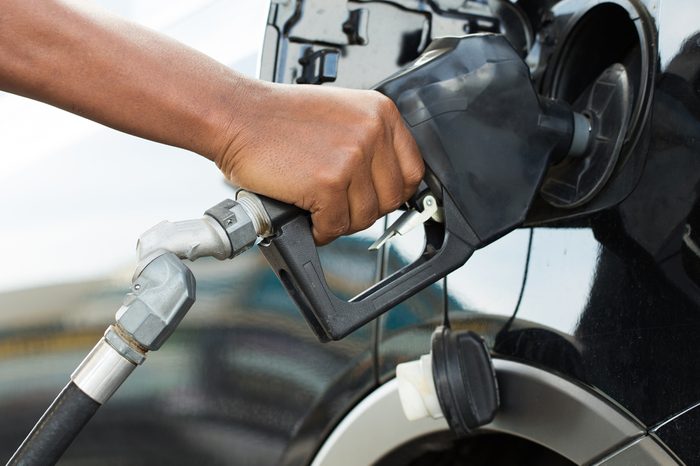
“Topping off” the tank
Just one or two last drops of gasoline can’t hurt, right? Not so fast. Those automatic shut-off valves are there for a reason, experts say. Because gasoline needs room to expand, overfilling the tank can build up the pressure in your car and lead to a dangerous leak. Plus, “you’re just as likely to spill a few drops as you get them in your tank, and that’s not cost efficient for you,” Lenard says. You’re better off sticking to the recommended amount of fuel.
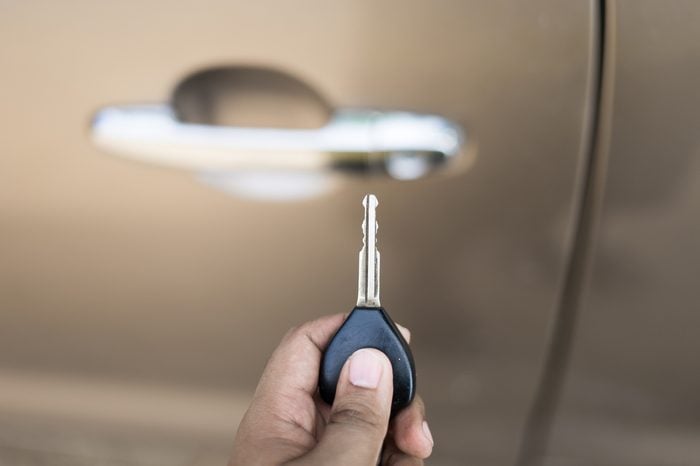
Not locking the car doors
There are approximately 40 million fill-ups on a daily basis, according to Lenard. With so many people visiting the gas pumps each day, criminals have started to take advantage of unsuspecting drivers. One of the most common practices is called “sliding,” where thieves steal purses or other valuables sitting in an unlocked car while the owner is preoccupied. Avoid becoming a victim by taking your keys out of the ignition and locking your doors before you refuel.
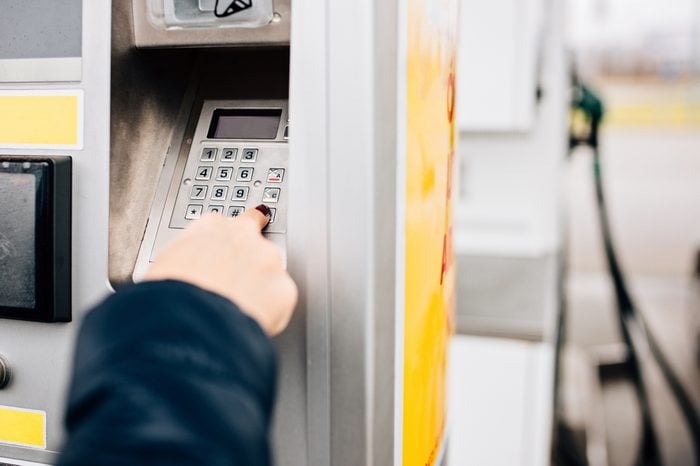
Using a credit or debit card
Another frequent crime at gas stations is called “skimming,” in which thieves steal credit card information from drivers who pay in plastic when they fill up. To protect yourself, Lenard suggests looking for external skimmers placed over the dispenser’s keypad; they are often loose-fitting and look newer than or different from the other equipment. A telltale sign of an internal skimmer, on the other hand, is when the dispenser’s door looks like it has been forced open.
RELATED: 26 Secrets an Identity Thief Definitely Doesn’t Want You to Know
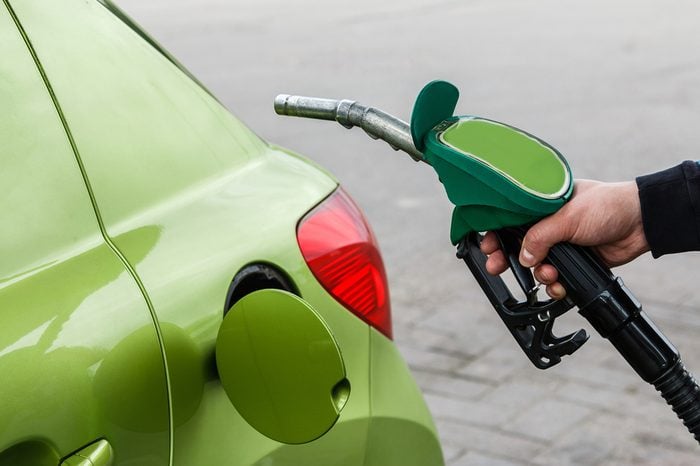
Splashing gasoline onto exposed skin
One of the most common health hazards of pumping gas is accidental spillage on your arms and hands, according to experts at Healthline.com. Because gasoline is toxic, it can cause irritation, rashes, or even burns if it comes in contact with your bare skin. Tap the nozzle against the vehicle’s tank to get rid of any last drops before returning it to the dispenser.
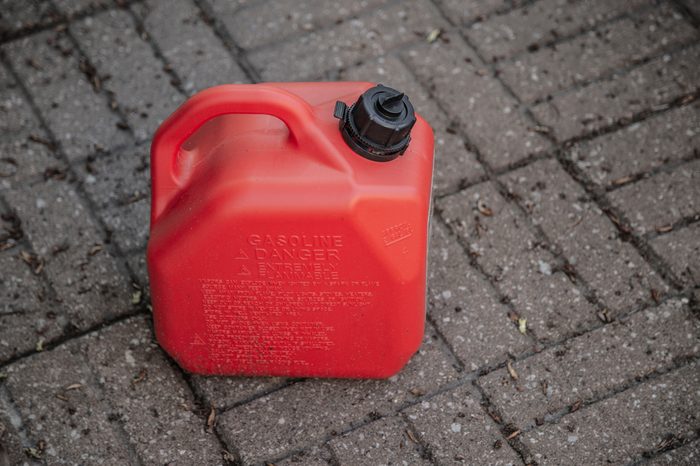
Pumping gas into a portable container
Take caution when pumping gas into a portable can or container, experts say. In a report by the National Institute for Occupational Safety and Health (NIOSH), static-related fires started when people filled gasoline containers in the plastic beds of pickup trucks or in cars with carpeted surfaces. To avoid static build-up, NIOSH recommends placing the gas can on the ground before filling up. Chief Wormser also warns against pumping gas into empty milk jugs or other plastic containers; find containers that are certified to hold gas, instead.
RELATED: Why Don’t All Cars Have Gas Tanks on the Same Side?
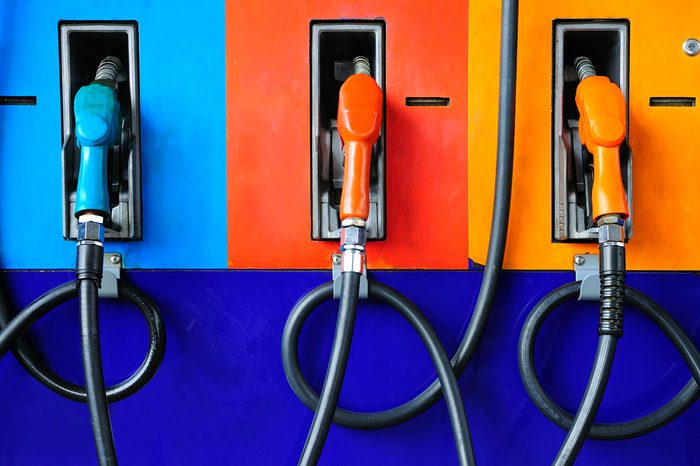
Inhaling gasoline fumes
Over a long period of time, gas inhalation can damage your lungs and cause other dangerous health symptoms, such as difficulty breathing and severe headaches. But drivers, you can breathe easy: It’s not likely that you will get gasoline poisoning just by refilling your tank. Still, you should always avoid directly inhaling gasoline vapor and never keep your car running in a confined space, according to Healthline.com.
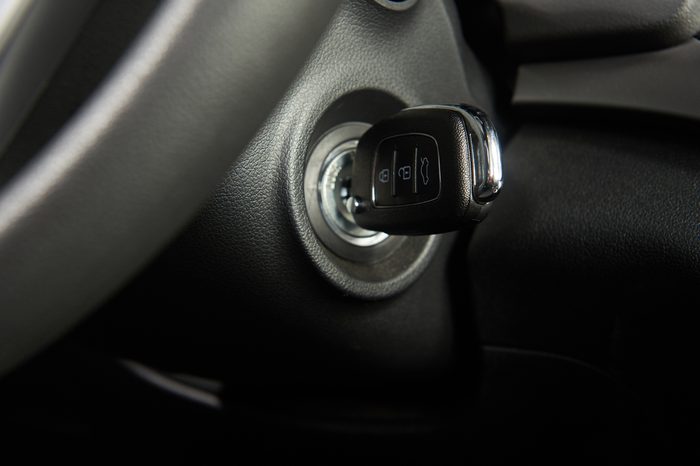
Leaving your car on as it refuels
You might think this is just an occasional oopsie, but it could actually have dangerous consequences. Gas vapors from your car can mix with heat and electricity, creating static electricity that might start a fire. This is even more likely in colder months when the air outside is dry, according to the Petroleum Equipment Institute. Chief Thomas recommends checking that your car is in park and your keys are out of the engine before you reach for the nozzle.
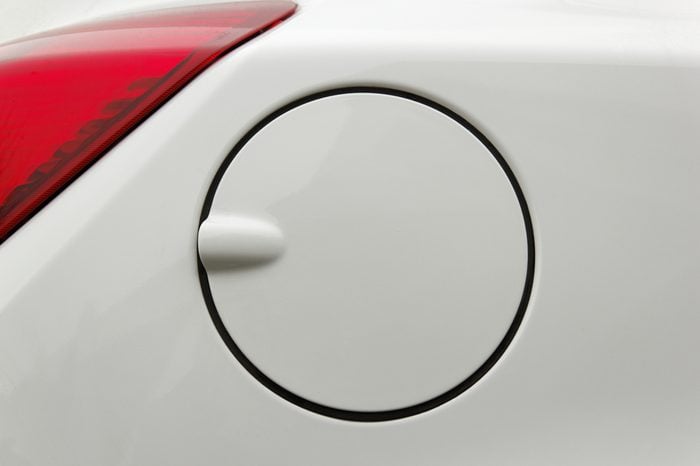
Putting diesel fuel in an unleaded-gas tank
These days, diesel pumps are clearly labeled with bright green handles and often don’t fit into normal gas tanks, Lenard says. But it is not uncommon to mistakenly fill an unleaded-gas tank with diesel fuel, especially if you are distracted or in a hurry. To avoid serious damage to your car, experts say to keep the engine off and find an auto mechanic to drain the tank ASAP.
RELATED: This Is How Much Gas You Should Be Keeping in Your Tank
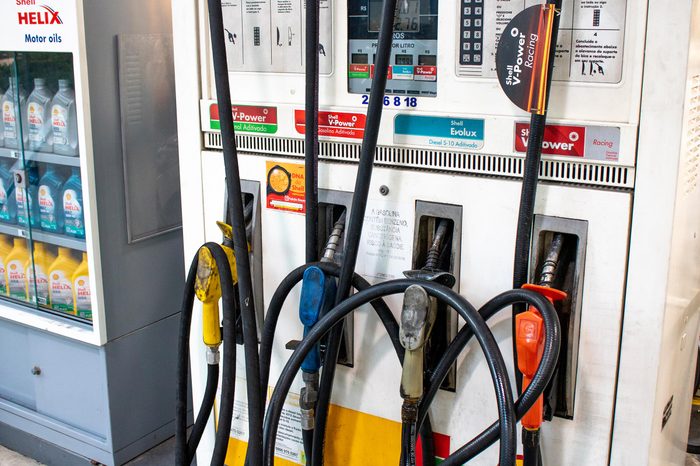
Not paying attention to warning signs
The next time you pull up to a gas station, take a minute to read the posted warning signs. “When people choose not to acknowledge the posted warnings and precautions and behave otherwise, they put themselves in harm’s way,” Chief Thomas says. Common warnings, such as not smoking and putting away your cell phone, can help drivers avoid dangerous mishaps at the pump.
Sources:
- Brenda Thomas, a Georgia-based fire prevention chief
- Gregory Wormser Virginia-based fire chief
- PEI: “Stop Static Campaign”
- Jeff Lenard, spokesperson for the National Association of Convenience and Fuel Retailing
- Healthline: “Symptoms of gasoline poisoning”
- National Institute for Occupational Safety and Health: “Fire Hazard from Filling Portable Gas Cans in Pickup Trucks and Cars”
